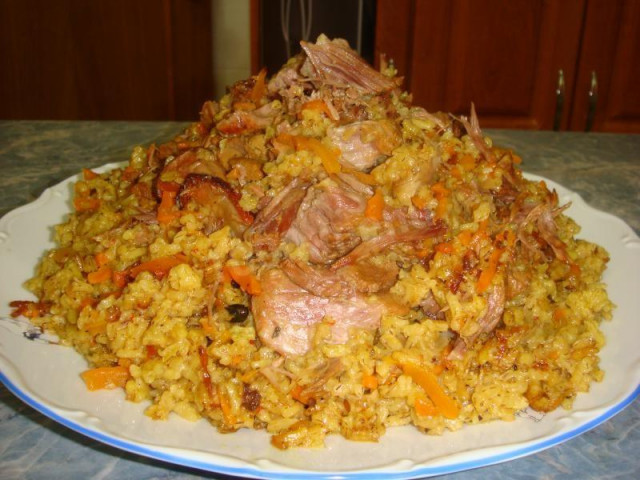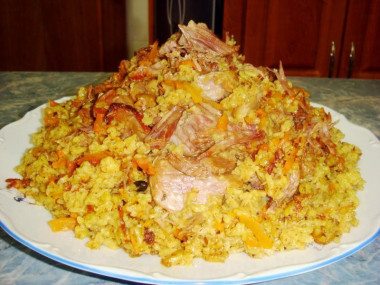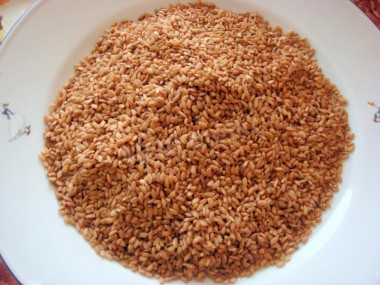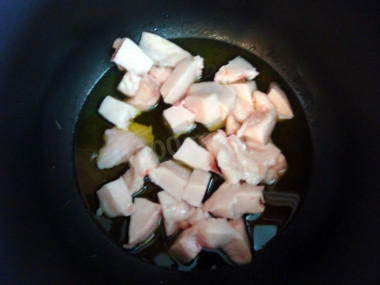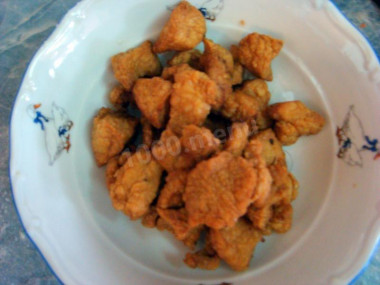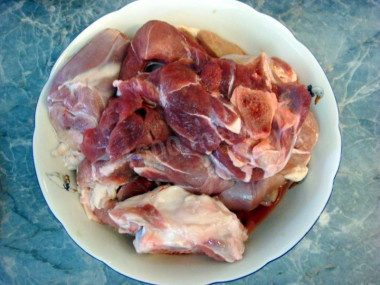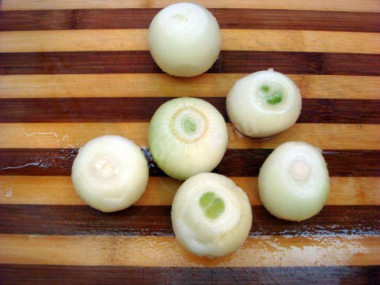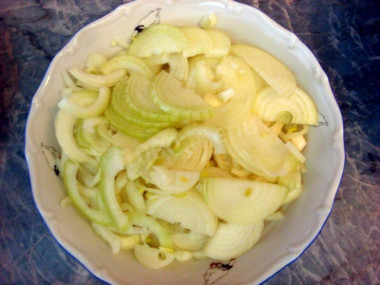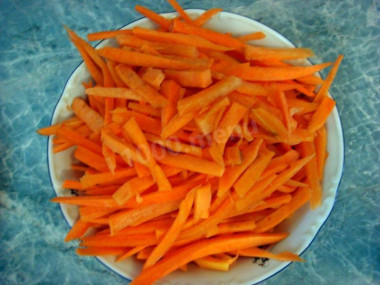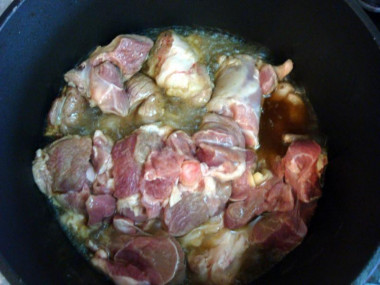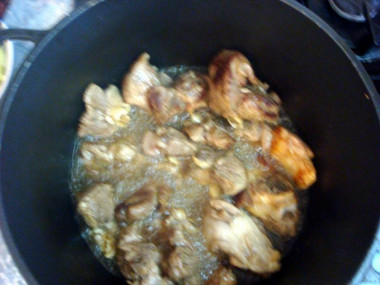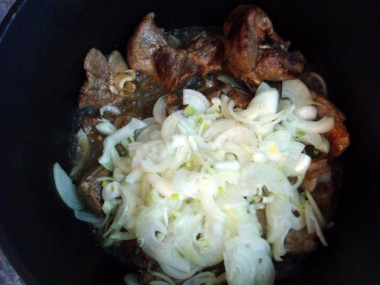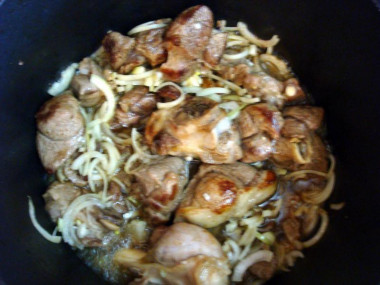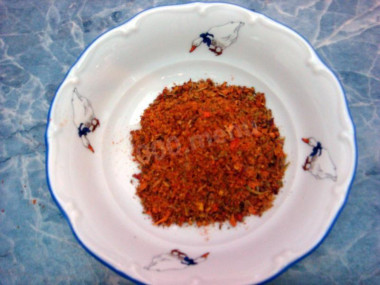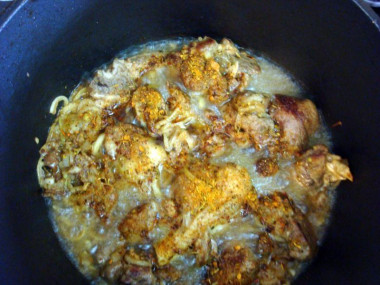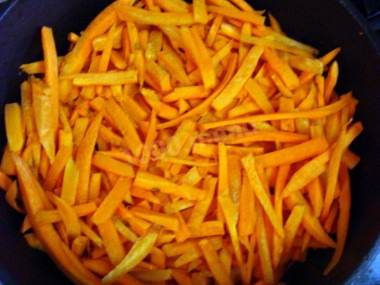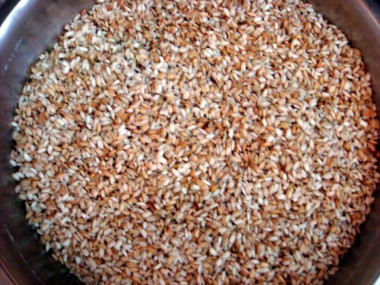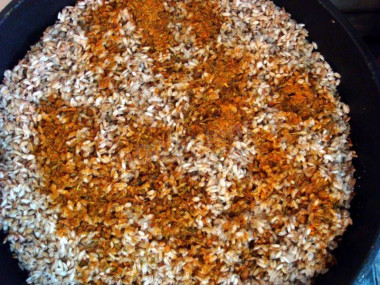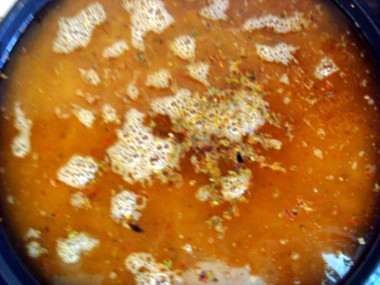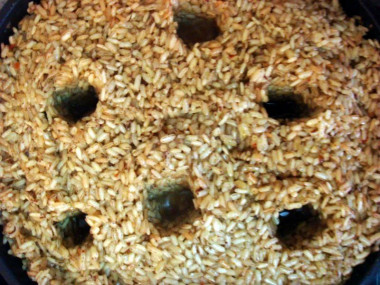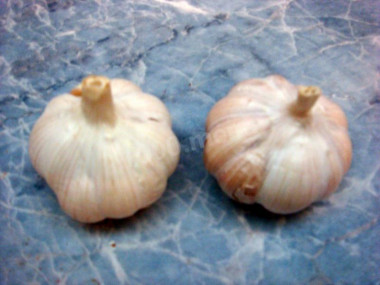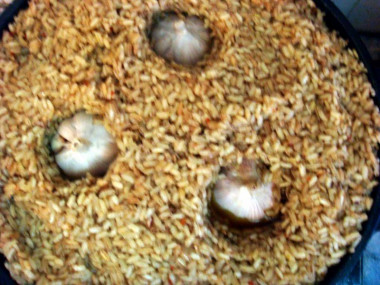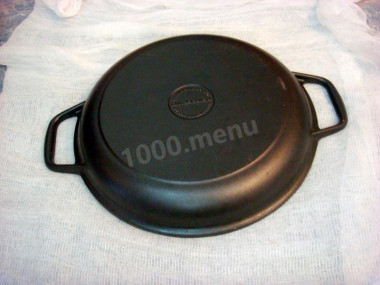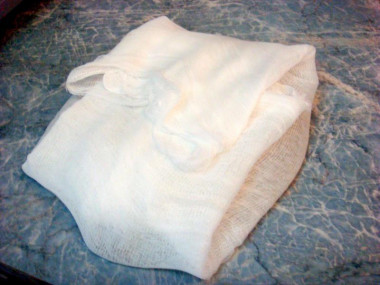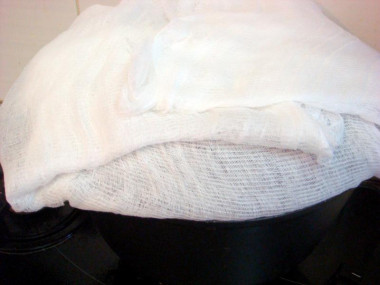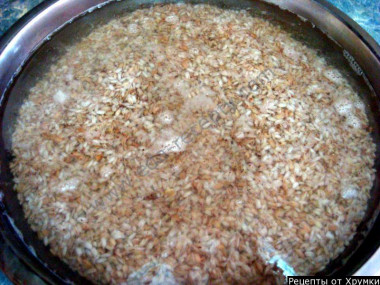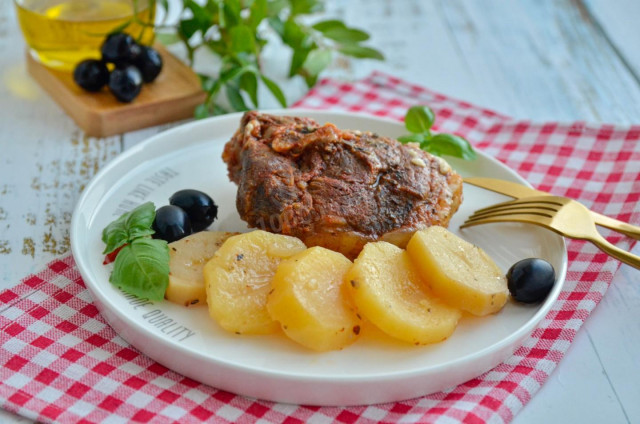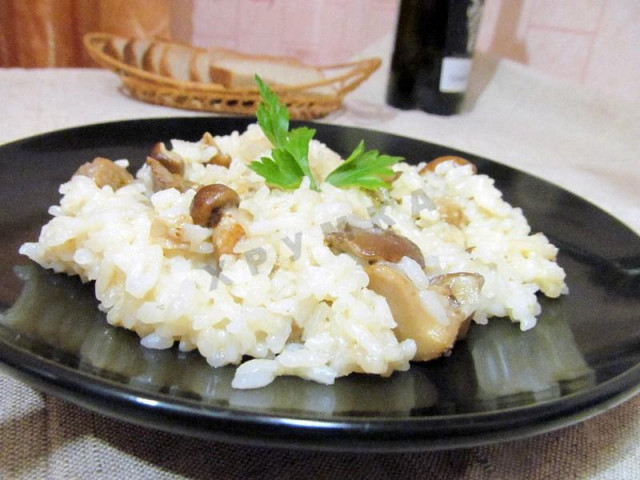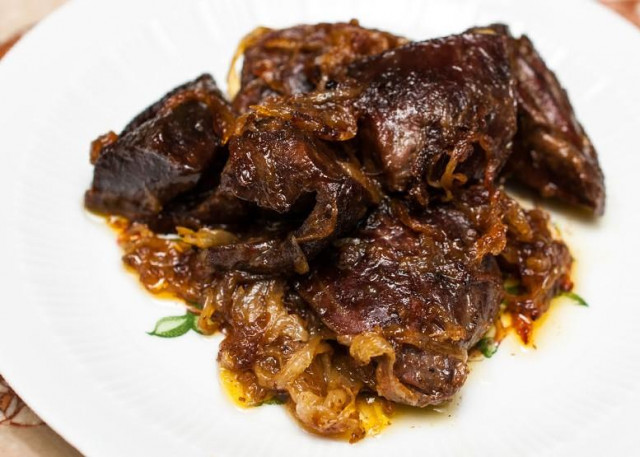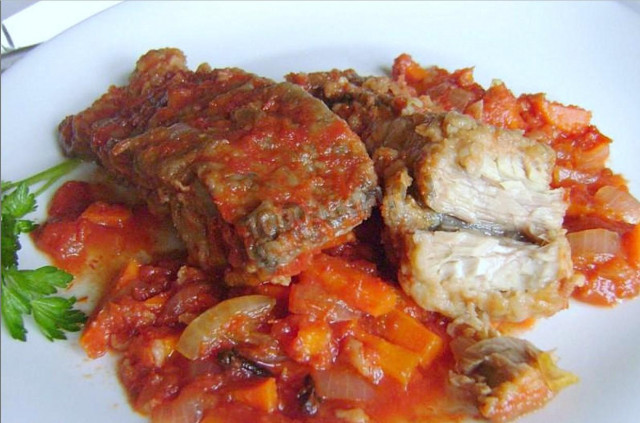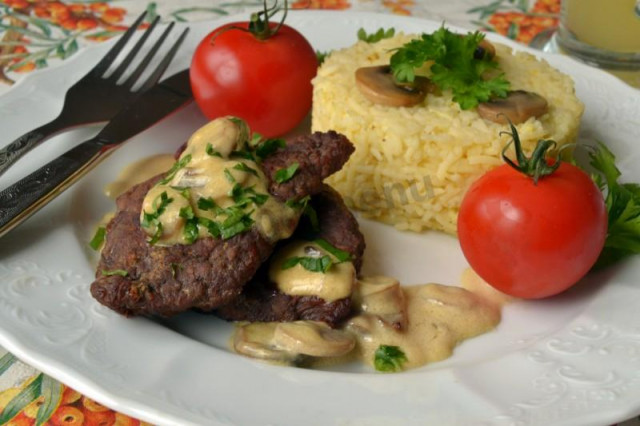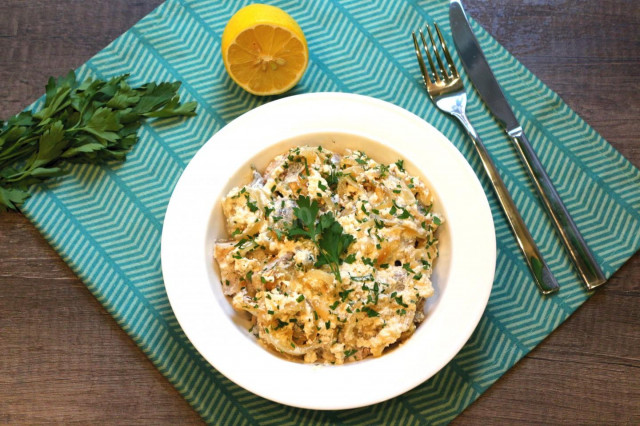Composition / ingredients
Step-by-step cooking
Step 1:
Brown rice
Step 2:
Rinse rice and pour salted water
Step 3:
Linseed oil
Step 4:
Melt the chicken fat
Step 5:
Pork rinds
Step 6:
Chicken fat
Step 7:
Lamb
Step 8:
Onion
Step 9:
Bow half rings
Step 10:
Cut carrots into cubes
Step 11:
Carefully put the meat in the cauldron
Step 12:
Fry the meat
Step 13:
Lay out the onion
Step 14:
Fry the onion
Step 15:
Condiments for pilaf
Step 16:
Add salt and a little seasoning
Step 17:
Lay out the carrots
Step 18:
Lay out the rice
Step 19:
Add salt and seasonings
Step 20:
Fill with water
Step 21:
Check the water level
Step 22:
Wash the garlic
Step 23:
Bury garlic in rice
Step 24:
Lid and gauze
Step 25:
Wrap the lid with gauze
Step 26:
Cover the cauldron with a lid with gauze
Step 27:
How to make Uzbek pilaf with lamb? Take the brown rice, sort it out, rinse it, pour salted water and set aside.
Cut the meat with bones into large chunks.
Cut the onion into half rings, carrots - long thin bars, chicken - pieces.
Pour the linseed oil into the cauldron. Turn on the gas at full power.
When the oil warms up, lay out the fat and melt the fat. Remove the pork rinds.
Next, place the meat very carefully on the wall of the cauldron.
As soon as the meat is fried and the water has evaporated, put the onion in the cauldron.
Mix everything so that the meat is at the top and the onion is at the bottom.
Salt the meat with onions, a little pepper, add a little seasoning.
After 7-8 minutes, as soon as the onion is browned, pour hot water over everything so that the meat is covered. Wait for everything to boil, turn down the heat and leave the meat to simmer for 30-40 minutes.
After this time, mix the meat with the onion for the last time and lay out the carrots.
Turn up the heat, wait for the contents of the cauldron to boil, turn down the heat and leave the carrots to languish for 15-20 minutes.
After the carrots are added, it is impossible to mix the contents of the cauldron.
After 20 minutes, add the rice, spreading it over the entire surface of the carrots, add salt, sprinkle evenly with pilaf seasoning, pour boiling water so that the water rises above the surface of the rice by 1-1.5 phalanges of the index finger.
Wait for the water to boil and turn down the heat to a minimum.
Now you need to wait for all the water to boil off.
To do this, carefully pierce the pilaf with the handle of a wooden spoon and see how much water is left.
If there is very little left, bury 2-3 heads of washed garlic in rice, cover the cauldron tightly with a lid wrapped in 3-4 layers of gauze or a towel. This is done so that the condensate does not turn our pilaf into porridge with meat.
In 20-25 minutes our lamb pilaf is ready.
Put rice and carrots on a dish.
Put the meat on top of the rice. Throw out the bones.
Important! To make rice dishes invariably delicious, read the article about the subtleties of choosing rice and the secrets of its preparation .
Any oils are useful only until a certain temperature is reached - the point of smoking, at which the oil begins to burn and toxic substances, including carcinogens, are formed in it. How to determine the roasting temperature and choose the best oil for frying, and which one is better not to use at all, read here .
Since the degree of salinity, sweetness, bitterness, sharpness, acid, burning is individual for everyone, always add spices, spices and seasonings, focusing on your taste! If you put some of the seasonings for the first time, then keep in mind that there are spices that it is especially important not to shift (for example, chili pepper).
Caloric content of the products possible in the composition of the dish
- Onion - 41 kcal/100g
- Lean mutton - 169 kcal/100g
- Fat mutton - 225 kcal/100g
- Lamb - brisket - 533 kcal/100g
- Mutton - ham - 232 kcal/100g
- Lamb chop on a bone - 380 kcal/100g
- Lamb shoulder - 284 kcal/100g
- Mutton - dorsal part - 459 kcal/100g
- Raw wild rice - 353 kcal/100g
- Brown raw rice - 360 kcal/100g
- Boiled brown rice - 119 kcal/100g
- White fortified raw rice - 363 kcal/100g
- Fortified boiled white rice - 109 kcal/100g
- White rice, steamed, with long grains raw - 369 kcal/100g
- Steamed white rice, boiled with long grains - 106 kcal/100g
- Instant dry rice - 374 kcal/100g
- Instant rice, ready to eat - 109 kcal/100g
- Fig - 344 kcal/100g
- Carrots - 33 kcal/100g
- Dried carrots - 275 kcal/100g
- Boiled carrots - 25 kcal/100g
- Salt - 0 kcal/100g
- Spices dry - 240 kcal/100g
- Chicken fat - 897 kcal/100g
- Linseed oil - 898 kcal/100g

